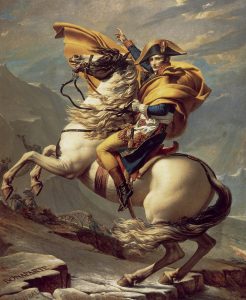
At the end of the first decade of the 21st century, large museum institutions are expanding more and more, not only by enlarging their headquarters but also by opening new branches at home and abroad. The first museum to test this model of development was the Guggenheim Museum which, in addition to the Peggy Guggenheim Collection in Venice, has opened in Berlin, and it is building, according to a project by Frank Gehry, the Abu Dhabi Guggenheim Museum.
The Tate Modern Museum in London has a satellite, for example, in Liverpool (Tate Liverpool Museum) while the Beaubourg Museum in Paris has inaugurated one in Mets.(1)
But the “most striking” cultural/commercial deal is the one closed by the Louvre Museum in Paris.
In 2007, the French Government and the Federal State of the United Arab Emirates signed an agreement to launch Abu Dhabi as a center of art and culture. The agreement provides for the thirty-year sale of the “Louvre brand”, along with the long-term loan of works of art from the famous Parisian museum and from twelve other French museums, in exchange for generous financial support.
The goal is to bring 8.5 million tourists annually to Abu Dhabi by 2020.
To distinguish itself from the nearby Dubai, which has already become one of the great capitals of world tourism, focusing on entertainment as well as luxury, and from Doha, which has focused on sport (World Cup 2022), Abu Dhabi has chosen the cultural path. The intention is to create a real museum district in Abu Dhabi, such as those in Berlin or Washington, Amsterdam or Vienna, between sea and sand.
Only the grant of the “Louvre” brand for the duration of 30 years seems to be worth 400 million Euros, while another 575 million Euros will be granted in exchange for loans.
The Louvre Museum in Abu Dhabi is a design by Jean Nouvel: a city-museum, an elegant and Pharaonic project. It is the first museum of its kind in the Arab world, a universal exhibition, which focuses on human stories shared through civilizations and cultures.
According to Mohamed Khalifa Al Mubarak, president of The Abu Dhabi Tourism & Culture Authority and Tourism Development & Investment Company, the Louvre Museum in Abu Dhabi embodies the belief of the founders of the United Arab Emirates: that nations grow with diversity and acceptance which highlights how the world has always been interconnected.
The highest representatives of French culture have confirmed, in addition to the complete absence of vetoes regarding representations of the deities of every religion and provenance, that the Louvre Museum in Abu Dhabi will be exempt from any prohibition of representation of the nude, in painting or sculpture, sacred or not.
They will display important masterpieces from France, such as the “Portrait of Lady” (La Belle Ferronière) by Leonardo (from the Louvre), “Napoleon Crossing the Alps” by Jacques-Louis David (from Chateau de Malmaison) and the “Self-Portrait” by Vincent Van Gogh (from Orsay).
THE LOUVRE MUSEUM AND THE ABU DHABI DEAL: A MODEL TO BE IMITATED OR AVOIDED?
The birth of the Louvre Abu Dhabi Museum has invariably raised great controversy in France, where many contested the commercialization of such a noble brand. On 12th December 2006 the French newspaper Le Monde published the article “Les musées ne sont pas à vendre” (transl.: Museums are not for sale) by Françoise Cachin, Jean Clair and Roland Recht “where they claimed that” Les œuvres d’art sont a patrimoine à montrer, pas une attraction ni une marchandise ” (transl.: Works of art are heritage to show, not an attraction or a commodity). And they concluded the article stressing that “les objets du patrimoine ne sont pas des biens de consommation, et préserver leur avenir, c’est garantir, pour demain, leur valeur universelle” (transl.: heritage objects are not consumer goods, and preserving their future means guaranteeing, for tomorrow, their universal value).
The Louvre deal is certainly a way to promote its own “brand” and Western art and customs in countries with different cultures – in this case the Arab world. It is also a way to promote Paris abroad, in addition to significant economic speculation.
However, this phenomenon risks triggering the perverse mechanism that induces in the loan policy to privilege the museum/partner which is wealthier than the others, marginalizing all the “serious” but less wealthy museums. Even the museum, a noble cultural institution of our Society, would become a mere business.
But are we really sure that this cultural and commercial deal is not simply a means of “selling one’s soul”?
BIBLIOGRAPHY:
Maria Vittoria Marini Clarelli, Il Museo nel mondo contemporaneo, Carocci Editore, 2014, p. 196
<a href=”https://dariodavide.com/the-three-hour-tour-of-pompeii-with-its-amphitheater” title=”Our Pompeii three-hour guided tour with the amphitheater”> For info about our three-hour guided tours of Pompeii</a>





